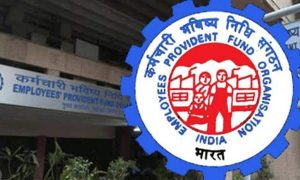When switching from one job to another, an employee is required to transfer his/her Employees’ Provident Fund (EPF) account held with the previous employer to the new employer. However, what if the new employer runs a private trust for the EPF proceeds whereas the previous employer was depositing EPF money with the Employees’ Provident Fund Organisation (EPFO)? In such a situation, can the employee transfer money from the old EPF account to the new EPF account if the transfer is between a private EPF trust and the EPFO?
Prashant Singh, Vice President and Business-Head- Compliance and payroll outsourcing, TeamLease Services say, “As per the EPFO rules, an individual can easily transfer his EPF account held with old employer to new employer irrespective whether the previous or new account was/is held with trust or EPFO.”
Singh says that there are two aspects with regards to transferring EPF account one should be mindful of. “An EPF member not only transfers money from an old EPF account to a new EPF account, he/she also transfers details related to Employees’ Pension Scheme (EPS) account to new employer. In the EPS account, details related to number of years of service is transferred to the new employer. However, money deposited by the employer (old and new) in the EPS account is deposited to the EPFO. At the time of transfer, the money lies with the EPFO and pension is paid to you when you become eligible to receive,” explains Singh.
Steps to transfer EPF account from EPFO to employer’s trust or vice versa
Singh says, “Transfer of EPF account can be done online provided both the employers (old and new) are able to initiate transfers though unified portal. If the details of a particular company or trust is not available on the Member Sewa portal, then employee has to fill Form 13 manually and submit the same to his/her HR department. Recently, the government has announced automatic transfer of EPF accounts at the time of changing job, however, the process is yet to be announced.”
Before starting the process of transferring the EPF account, the individual should ensure that his/her EPF account is KYC compliant, Universal Account Number (UAN) is linked to Aadhaar number and mobile number linked with EPF account must be linked with Aadhaar number.
Here’s a step-by-step guide to transfer EPF account on the Member Sewa portal.
Read more:Provident Fund alert! PF a/c to be split into two from April 1: Here are 5 big points
Step 1: Login to your account on Member Sewa portal by entering UAN and password.
Step 2: Once logged in, click on ‘Online Services’ and select ‘One Member- One EPF Account (Transfer Request)’.
Step 3: A new tab will open. Here details of the new EPF account where you want to transfer money to will be shown. You will be required to enter your new EPF account number. This is available on your salary slip or EPF statement of your new employer.
Step 4: You will be required to select whether attestation of your online transfer will be done by your present employer or previous employer. You should check with your current employer if you can choose them for attestation of EPF account transfer.
Step 5: Enter Member ID (previous EPF account number) in case UAN of both your old and new employer is same or else enter UAN of old employer if it is different. Click on ‘Get Details’ and details of your EPF account will be shown. Select the account from where the money is transferred.
Step 6: Click on ‘Get OTP’ and a one-time password will be sent to your Aadhaar-linked mobile number. Enter the OTP and your transfer request will be submitted successfully. Your tracking ID will be generated, and you can download the submitted form in PDF format.
How long does it take to process transfer request?
Singh says, “Usually EPF transfer takes 30 to 45 days to complete. Once the EPF transfer is successfully completed, old EPF account employer (EPFO/Trust) will issue Annexure K in two copies – One copy will be given to the employee and another copy will be given to the new employer (trust/EPFO). If you have not received Annexure K copy, then you can request your new employer to provide you the same.”





































